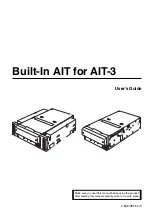
8.2.1 Scenario Introduction
This section briefly introduces the application scenario of the snapshot technology.
To prevent data loss from virus infection, network game operator A needs to continuously back
up data. Once data is infected with a virus, network game operator A can use a backup of data
at a previous point in time to recover corrupted data and services.
8.2.2 Network Planning
This section introduces the networking for anti-virus in detail.
shows the network environment after the network is reconstructed.
Figure 8-2
Network environment
Linux
AIX
Windows
VIS6000
FC switch
Storage arrays
Maintenance
terminal
Optical fiber
In the previous figure, the VIS6000 is a newly-added device.
8.2.3 Capacity Planning
This section introduces the requirement analysis and capacity planning.
The data variation every day of game operator A is about 20 GB. If the snapshot volume is
refreshed every hour, the array must provide at least 320 GB cache space for snapshots.
NOTE
Cache space in this section refers to disk space rather than the memory of the storage array or the VIS6000.
8.2.4 Service Planning
This section introduces the service planning.
The customer requires 24-hour data backup, and the service data variation is great. To minimize
the occupation of the storage space, optimized-space instant snapshots are created for the data
volume. A total of 24 optimized-space timing snapshots are required. Set 24 timing policies for
these snapshots, and the snapshot time points of these policies are different from each other.
OceanStor VIS6000 Series Virtual Intelligent Storage
System
Initial Configuration Guide
8 Configuration Instance
Issue 08 (2010-05-10)
Huawei Proprietary and Confidential
Copyright © Huawei Technologies Co., Ltd.
8-5
















































